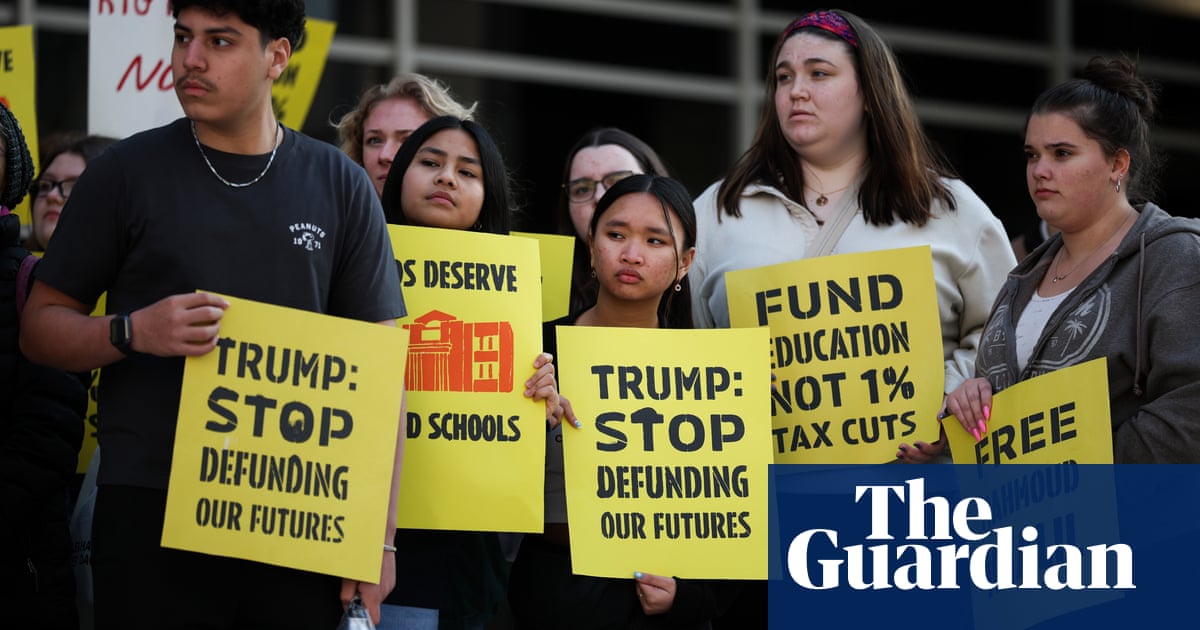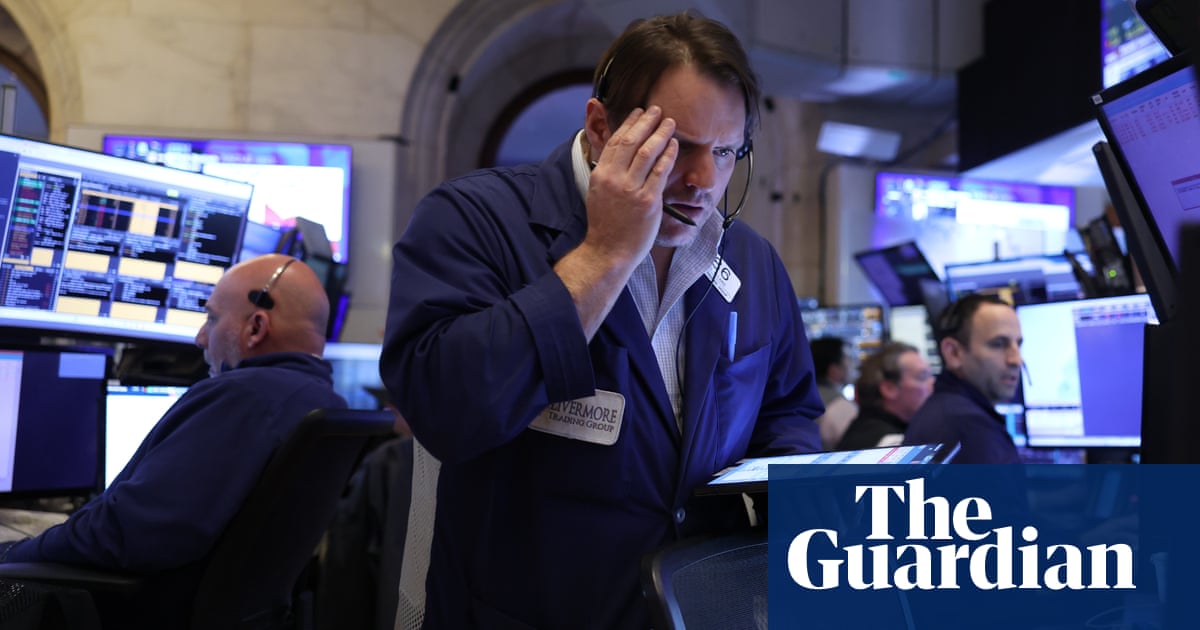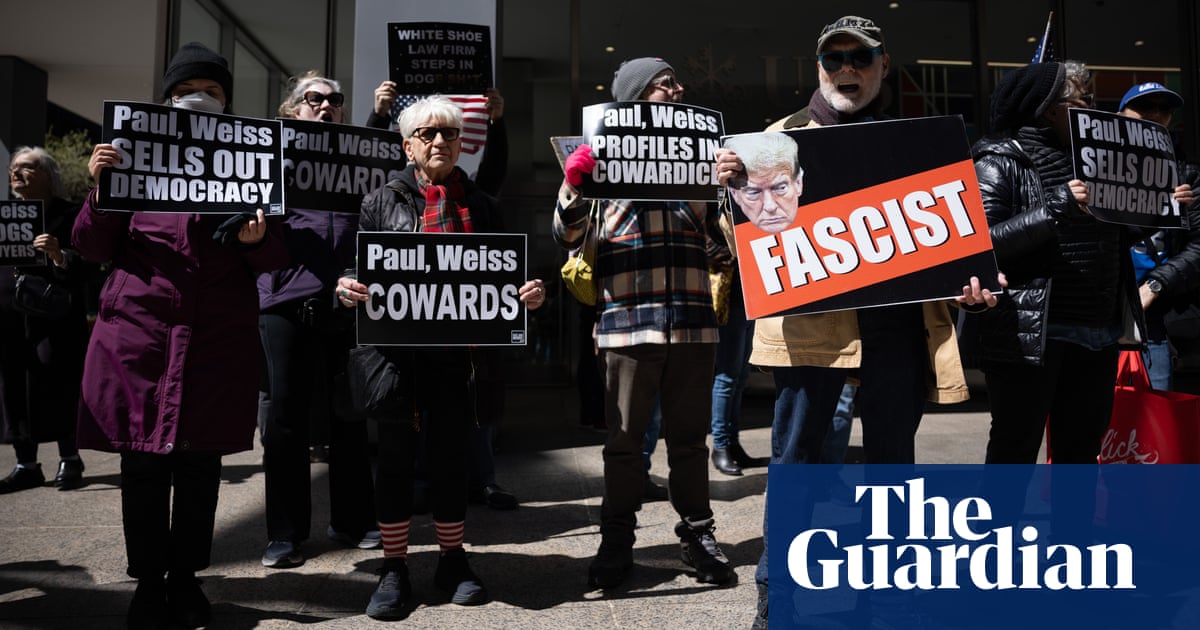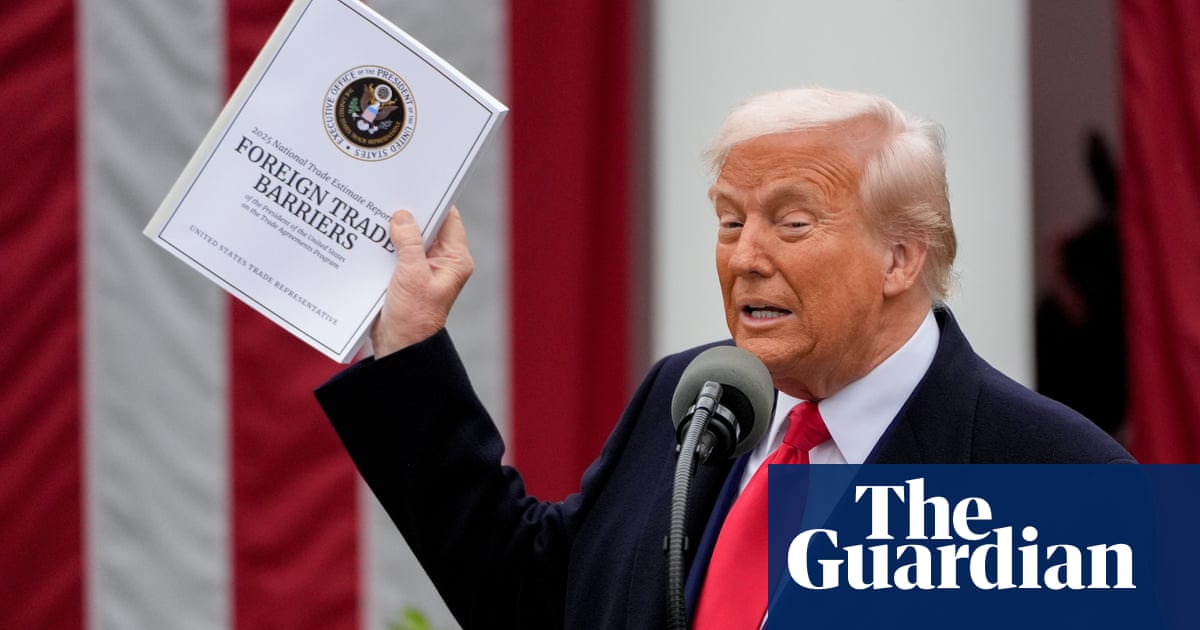Donald Trump is finally making good on his campaign promises to “build that wall” – but instead of steel fencing along the Mexican border, it will be constructed from tariffs, and will enclose the entire United States.
In his pugnacious and typically rambling speech on the White House lawn on Wednesday, Trump set out plans for across-the-board import taxes, ranging from 10% to more than 40%.
The president promised “liberation”, yet the immediate impact is more likely to be rising prices for US shoppers and corrosive uncertainty for firms, exacerbating an economic slowdown that may already be under way.
Outside the wall, countries will be affected according to how dependent their economies are on exports to the US – and how exposed they are to the global trading system. For some, it is likely to be devastating.
The UK will be relieved to be slapped with only the 10% minimum after Keir Starmer’s charm offensive, and the EU may have feared worse than 20%. For some countries Trump outlined much higher rates: 46% for Vietnam, 49% for Cambodia and 29% for Pakistan, for example.
The precise effects of sweeping tariffs on this historic scale are hard to predict. One factor is how rival economies will respond: retaliatory tariffs tend to make a bad situation worse, though they may make short-term political sense (see Mark Carney’s poll ratings in Canada).
Another question is whether the dollar may appreciate, somewhat softening the blow for US importers. That may limit the effect on prices, which would otherwise be expected to rise as the cost of importing products and materials increases.
The main challenge in assessing the exact impact of the plans, though, is that Trump’s statement did not mark the end of the period of profound economic uncertainty that began when he arrived in the White House – quite the opposite.
Instead, he has fired the starting gun on a new and inherently unpredictable scramble, in which governments will fire back with their own punitive tariffs – at the same time as negotiating hard to try to secure exemptions.
As in the UK, where ministers hope to secure an “economic agreement”, which appears to involve sweeteners for US big tech and lower tariffs on food imports, these talks are likely to have economic consequences of their own.
And it remains unclear how amenable Trump is likely to be to persuasion.
On the one hand, he appears to enjoy the theatre of using tariffs to exact policy concessions, which he can then portray as a winning deal. Trump-watchers have sometimes argued that a dramatic slide in stock prices might lead the president to pull back from the harshest version of the policy. His press secretary, Karoline Leavitt, insisted on Tuesday that Wall Street “will be just fine” as a result of the tariff package.
But in other moments, Trump has appeared to suggest a bit of market turbulence might be part of the plan. “There is a period of transition, because what we’re doing is very big,” he said in a recent Fox News interview – in which he also declined to rule out a recession.
There is also the small matter of the revenues the administration hopes to raise from tariffs, which it wants to use to fund tax cuts. The White House trade adviser, Peter Navarro, has suggested the levies could raise an extraordinary $600bn (£460bn) a year: hardly consistent with offering carve-outs to every major economy that comes knocking.
Caving in would also undermine another of Trump’s sometimes-contradictory aims: persuading firms to create new manufacturing jobs, inside the shelter of the tariff wall.
As bewildered trade experts repeatedly said in the run-up to what Trump has called “liberation day”, and are likely to continue to say after Trump’s outing in the Rose Garden, guessing what happens next is all but impossible.
All this makes for an alarming level of uncertainty – which consumers and businesses hate. Consumer confidence measures in the US have already been sliding sharply. Alongside weeks of headlines about the ambiguous tariff plans, the tens of thousands of abrupt government job losses made by Elon Musk’s “department of government efficiency” seem unlikely to have helped the mood.
And in boardrooms, baffled executives may be reluctant to press ahead with significant investments – bringing manufacturing back into the US as Trump hopes, for example – when it is unclear how long the tariffs will endure.
Whatever the medium-term prospects of jobs and factories coming “roaring back” to the US, as Trump predicted, for now what some had already dubbed a “Trumpcession” appears significantly more likely to happen, than the “golden age” he has promised.

 German (DE)
German (DE)  English (US)
English (US)  Spanish (ES)
Spanish (ES)  French (FR)
French (FR)  Hindi (IN)
Hindi (IN)  Italian (IT)
Italian (IT)  Russian (RU)
Russian (RU)  20 hours ago
20 hours ago
























Comments